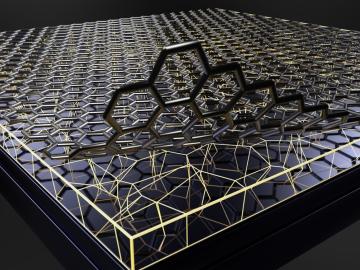Filter News
Area of Research
News Type
Date
News Topics
- Artificial Intelligence (2)
- Big Data (2)
- Buildings (2)
- Clean Water (2)
- Climate Change (3)
- Composites (1)
- Critical Materials (1)
- Decarbonization (2)
- Energy Storage (2)
- Environment (3)
- High-Performance Computing (2)
- ITER (1)
- Machine Learning (2)
- Materials (2)
- Materials Science (1)
- Neutron Science (1)
- Simulation (2)
- Sustainable Energy (1)
- Transportation (2)
Media Contacts

Scientists at the Department of Energy’s Oak Ridge National Laboratory are using a new modeling framework in conjunction with data collected from marshes in the Mississippi Delta to improve predictions of climate-warming methane and nitrous oxide.

Researchers demonstrated that stainless steel and other metal alloys coated with hexagonal boron nitride, or hBN, exhibit non-stick or low-friction qualities along with improved long-term protection against harsh corrosion and high-temperature.

Electric vehicles can drive longer distances if their lithium-ion batteries deliver more energy in a lighter package. A prime weight-loss candidate is the current collector, a component that often adds 10% to the weight of a battery cell without contributing energy.




